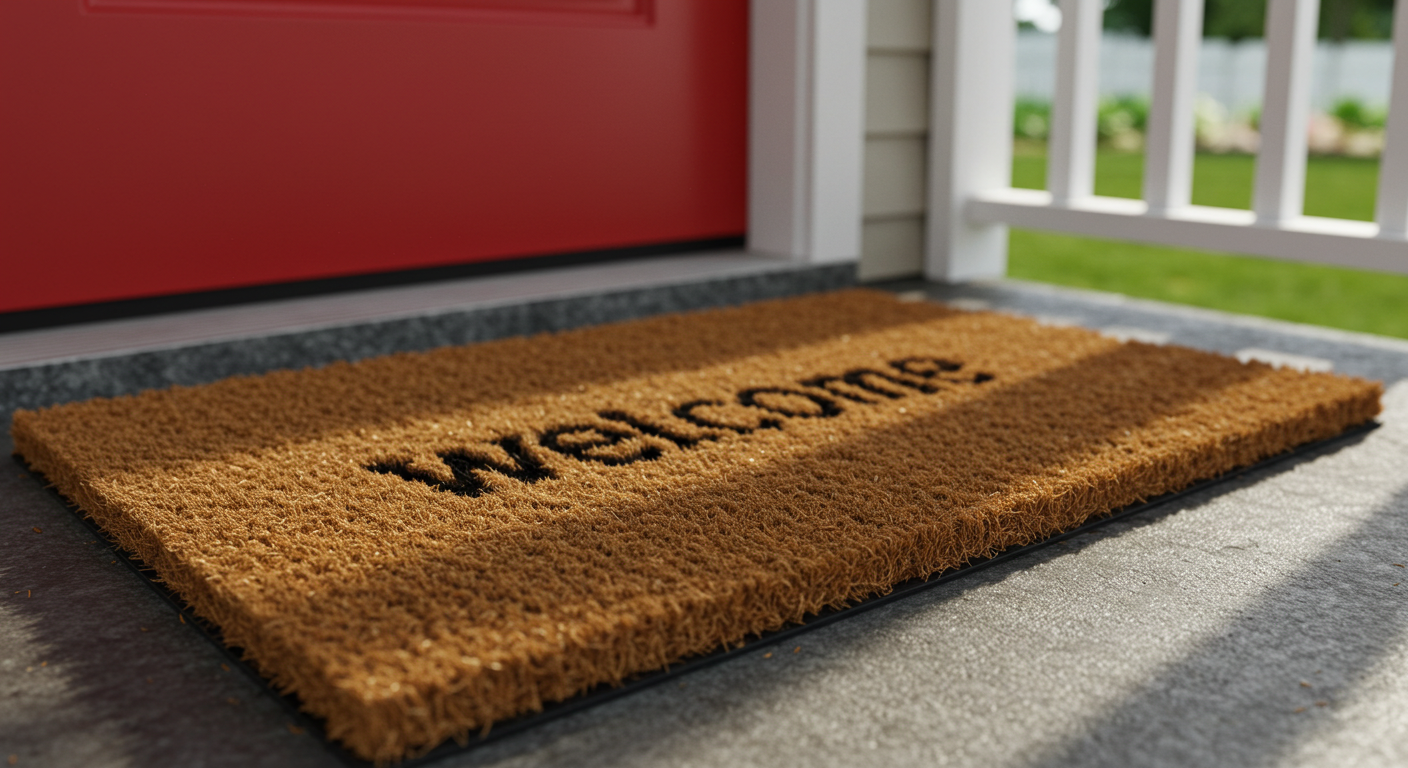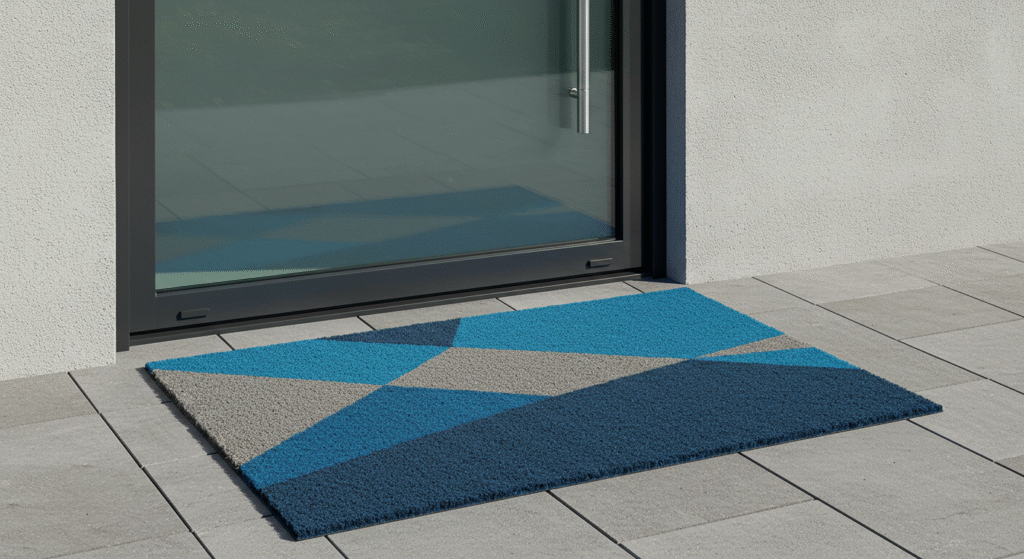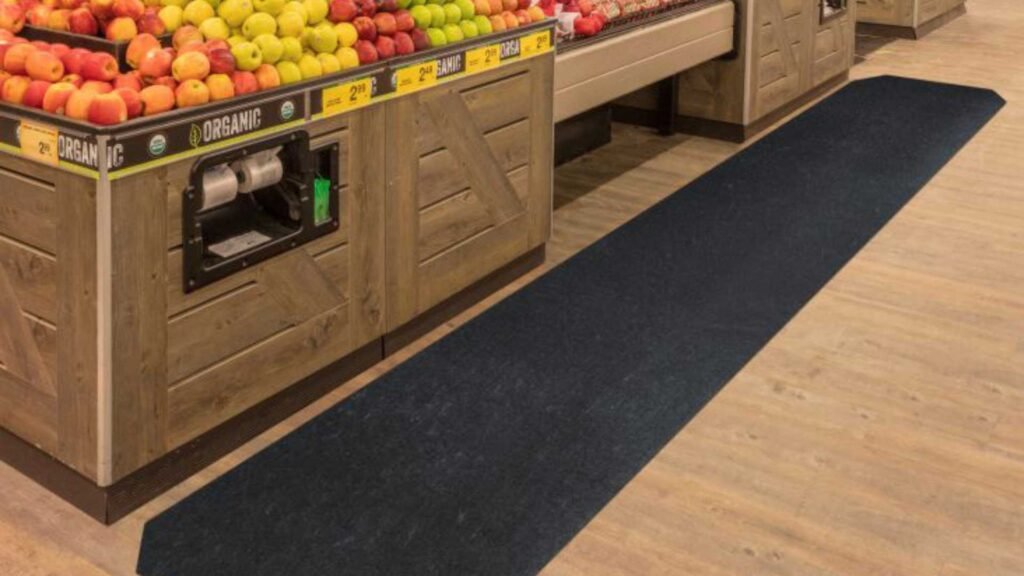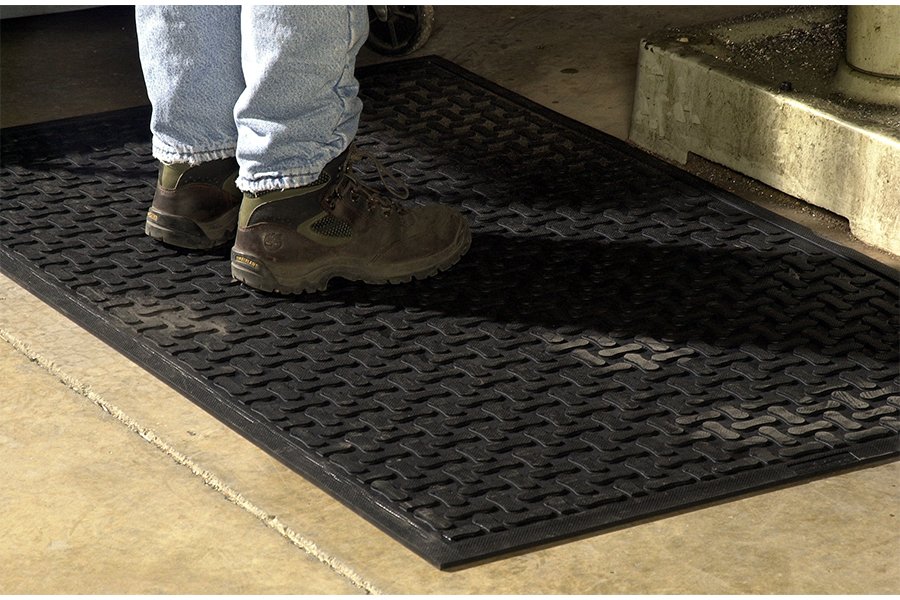
Blog
How to Choose the Best Entrance Mats for Heavy Foot Traffic in Office Buildings

Entrance mats are more than just a formality – they’re your building’s first defense against dirt, moisture, and wear, especially in high-traffic office spaces. If you’ve ever wondered why your floors need refinishing too often or why the lobby never quite looks clean, your matting might be the reason.
Why Entrance Mats Matter in Busy Office Buildings
Have you ever walked into a pristine office lobby only to see muddy footprints trailing across polished floors? That’s exactly what happens when entrance mats are treated as an afterthought in high-traffic areas.
Entrance mats in commercial buildings aren’t there just for show—they trap dirt, soak up moisture, and reduce the risk of slips and trips. Consider this: Each person entering your building carries around 0.2 grams of dirt on their shoes. With 1,000 people walking in and out daily, that’s 200 grams of mess threatening your floors.
Here’s why the right matting system is worth every naira (or dollar):
- Fewer floor repairs and refinishes
- Lower cleaning bills
- Reduced slip-and-fall incidents
- Longer carpet life
- Better first impressions for clients and visitors
A properly selected matting system captures up to 80% of soil and moisture – before it ever touches your interior flooring.
Key Considerations When Choosing Entrance Mats

Size Really Does Matter
When it comes to entrance mats, small isn’t mighty. If your mat doesn’t give visitors at least 6–10 feet of walking surface, it’s not doing its job. For buildings with consistent heavy traffic, larger or even custom-sized mats are more effective and safer.
Pro Tip
Install wider mats at entrances where traffic bottlenecks form. For corner or L-shaped entries, custom L-mats are a smart solution.
Material Types for Maximum Durability
The wrong material leads to quicker wear and increased risk. Here’s what to consider:
| Material | Benefits |
| Nylon/Polypropylene | Excellent durability and moisture control |
| Rubber-Backed Mats | Non-slip and resilient |
| Berber | Balance between appearance and performance |
Avoid flimsy welcome mats – they’re not made for daily commercial wear.
Slip Resistance Is Non-Negotiable
In any commercial space, safety is a legal and financial priority. Slip-resistant entrance mats should have:
- Rubber backing
- Beveled, anti-curling edges
- Water-absorbing fibers
- Non-slip surface texture
When wet weather rolls in, you’ll be glad you invested in mats with proper grip and drainage.
Recommended Entrance Mat Materials for High-Traffic Areas
Rubber and Nitrile Blends
Rubber mats handle abuse like pros. Especially in entryways exposed to dirt, oil, or moisture, nitrile rubber blends resist chemicals and maintain shape.
What makes rubber special is its bounce-back quality—it won’t flatten like cheap foam or fabric mats.
Polypropylene and Nylon
For indoor zones just beyond your main entrance, polypropylene mats actively scrape and absorb moisture. Nylon mats offer fast-drying capabilities and retain appearance even with heavy use.
Bonus: They don’t fade easily, even with sun exposure.
Natural Fibers (Coco & Sisal)
Looking to impress while staying functional? Natural fiber mats made from coco husk or sisal bring an eco-friendly and high-end aesthetic to your entryway. Best for covered or indoor entrances with moderate traffic.
Mat Placement Strategy: Exterior vs Interior
Exterior Mats: Stop the Dirt Outside
Exterior entrance mats should be your first line of defense. Look for:
- Heavy-duty grooves
- Weather resistance
- Water drainage capability
These are placed directly outside your doors to reduce dirt from ever entering.
Interior Mats: Clean What’s Left Behind
Use indoor mats to trap fine dust and moisture missed by exterior mats. Ideally, follow a three-zone system:
- Scraper mats (outside)
- Wiper/scraper mats (vestibule)
- Wiper mats (inside the lobby)
This layered strategy can block up to 95% of tracked-in debris.
Transition Zones: The 15 – 20 Foot Rule
Create a “transition zone” of matting from the door inward, covering at least 15 feet. That gives people enough steps to fully clean their shoes before hitting your main floor.
Maintenance Tips for Long-Lasting Entrance Mats
Daily Vacuuming
Entrance mats are only effective when they’re clean. High-traffic areas should be vacuumed:
- Once in the morning
- Again in the evening
Deep Cleaning Table
| Traffic Level | Vacuuming Frequency | Deep Cleaning |
| Extremely High | 2x daily | Weekly |
| High | Daily | Bi-weekly |
| Moderate | 3–4 times/week | Monthly |
Rotate & Store Properly
- Rotate mats 180° weekly to distribute wear
- Store rolled (not folded) in dry rooms
- Keep spares handy for seasonal mat swapping
Conclusion: The Right Entrance Mats Save Money, Time & Reputation
There’s no need to learn the hard way. The right entrance mats prevent costly slip-and-fall claims, preserve your flooring, and maintain a clean, polished look.
If you’re looking for a no-fail solution, we recommend the GripTrak Commercial Entrance System – a proven three-zone mat system designed for facilities with 1,000+ daily footfalls.
Frequently Asked Questions (FAQs) About Entrance Mats
1. How long should an entrance mat be for a commercial building?
A minimum of 6–10 feet is ideal. In heavy traffic buildings, a 15–20-foot transition zone offers the best protection.
2. What’s the best material for high-traffic entrance mats?
Rubber, polypropylene, and nylon are top choices. They offer durability, moisture absorption, and slip resistance.
3. How often should commercial entrance mats be cleaned?
Vacuum daily, deep clean weekly (depending on foot traffic), and rotate mats regularly to ensure even wear.
4. Can I use residential welcome mats in my office?
No. Residential mats wear out quickly in commercial environments and don’t offer proper slip resistance or absorption.
5. Are entrance mats required by law in commercial spaces?
Not always, but in many industries, they are highly recommended for safety and liability reduction, especially during wet seasons.


